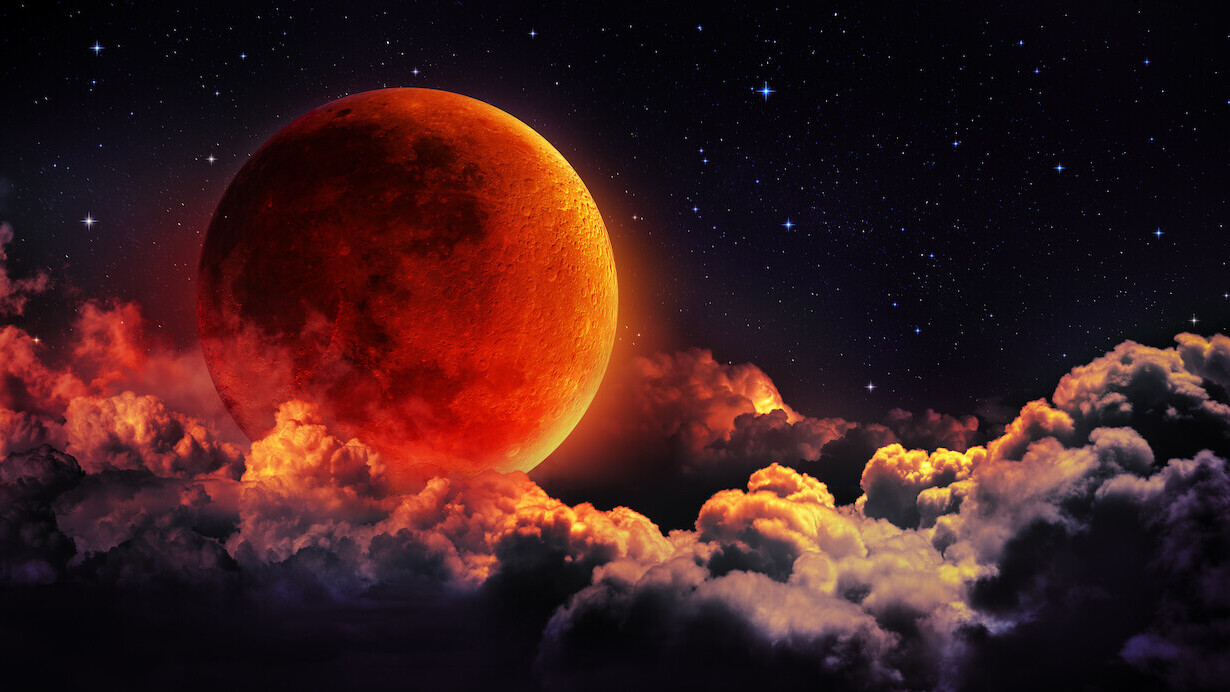
On May 26, a total lunar eclipse will be visible in the pre-dawn sky over much of North America. Skygazers will see the Moon pass completely into the shadow of Earth. As this happens, our familiar planetary companion will grow continually redder, before becoming extremely (yet, not entirely) dark.
The lunar eclipse on May 26 should be a delight for amateur astronomers (especially in the western United States), or casual stargazers willing to venture outside late at night.
“[C]ertain skywatchers will be able to catch a glimpse of a rare lunar trifecta: a ‘super blood moon.’ Not only will this be the biggest and brightest full moon of the year, it coincides with a total lunar eclipse, where the Moon will appear red for approximately fifteen minutes,” NASA officials describe.
The degree to which the Moon will be eclipsed, and the time at which it does so will differ, depending on the location from which the event is seen.
This eclipse is classified as a blood moon, due to the deep, crimson hue the Moon will display. Taking place during spring in the Northern Hemisphere, this eclipse is also considered a flower moon.
This event will also mark a supermoon — when the full Moon is near its closest approach to Earth. The Moon travels around the Earth at a distance ranging from 363,300 to 405,500 kilometers (226,000 and 253,000 miles) from our home planet. About once a year, this closest approach (or perigee) aligns with a full Moon. This alignment produces a supermoon, at which point the Moon can appear to be 14 percent larger, and 30 percent brighter, than normal.
How to watch it
No special equipment of training is needed to view this celestial display, but viewers will need to know when to head out for observations. Viewers in the western half of the United States (and western Canada) will get prime views of the lunar eclipse on May 26. People living east of the Mississippi River will see a partial eclipse of our nearest neighbor in space.
In Tucson, the eclipse will begin about 1:45 am, and will peak at 4:18. The display will come to an end when the Moon sets at 5:27. Times for Pacific coast viewers are similar. Those living further east will see just a short, partial eclipse in the pre-dawn sky — Indianapolis sees about 90 minutes of the display, while people in New York City will witness just 45 minutes of the eclipse. Viewers can check local eclipse times on Time and Date.

Even during a total lunar eclipse, some red light is still seen on the surface of our planetary companion. This is due to the fact that our atmosphere refracts (bends) light, like a magnifying glass. The air also scatters blue light (creating blue skies on Earth), meaning that most of the light that reaches the Moon during a lunar eclipse is red. The shadow of Earth creates both an inner, darker shadow, called the umbra, as well as a lighter shadow, known as the penumbra.
Lunar eclipses in ancient times
Ancient astronomers in Mesopotamia were able to accurately predict eclipses, but these events were considered direct threats to the king. During such a celestial event, the actual monarch would go into hiding, while a double took his place. Once the eclipse passed (surprisingly often without incident), the legitimate king would return to his throne, while the body double went back to everyday life.
Hindu folk tales tell the story of Rahu, a demon who drank a potion of immortality. The Sun and Moon cut off the head of Rahu attempting to stop the beast (apparently forgetting the whole immortality bit). This legend tells the decapitated head of Rahu now continually chases the Sun and Moon, seeking revenge. When one is captured, we see the attack as an eclipse.
During the 15th and early 16th Centuries, the Inca people, living in the Andes mountains of current-day Peru, believed lunar eclipses were the work of a jaguar attacking and eating the Moon. Fearing the celestial carnivore would turn its attention to Earth, people would shake their spears and yell at the Moon, driving dogs to howl, in an attempt to scare away the fearsome creature.
This article was originally published on The Cosmic Companion by James Maynard, founder and publisher of The Cosmic Companion. He is a New England native turned desert rat in Tucson, where he lives with his lovely wife, Nicole, and Max the Cat. You can read this original piece here.
Get the TNW newsletter
Get the most important tech news in your inbox each week.




